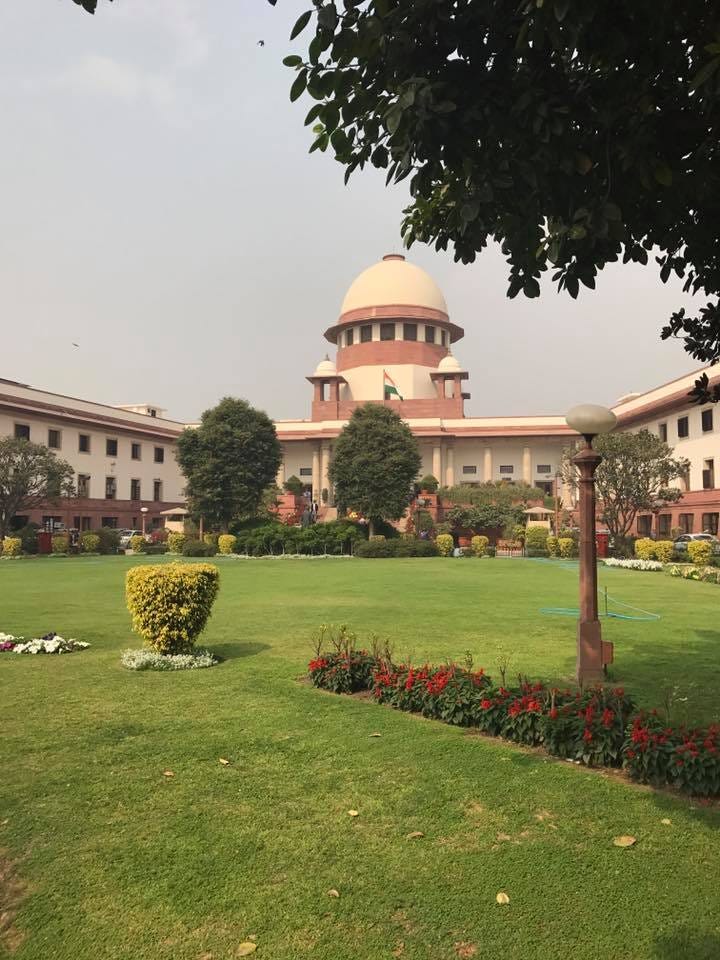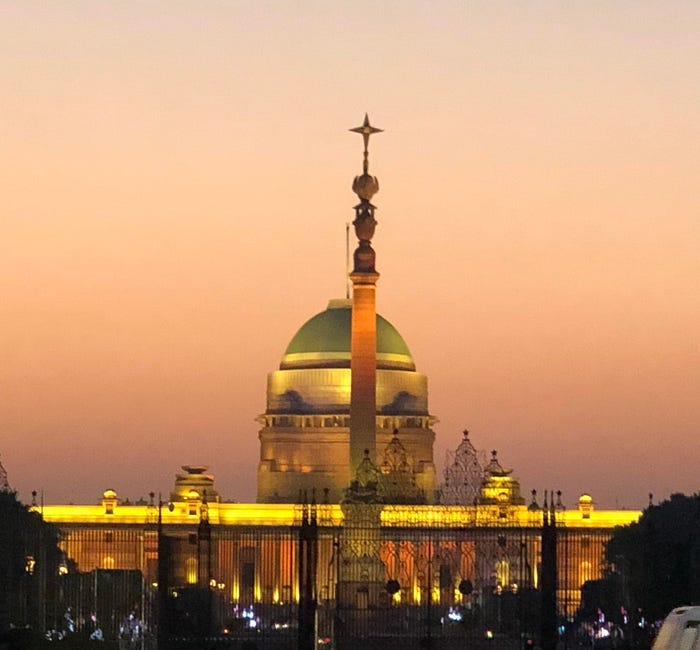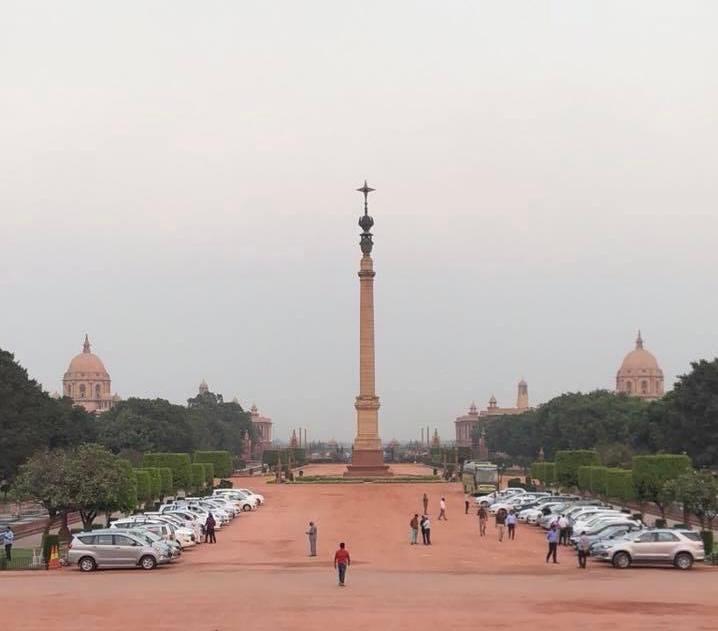Article 142: A Constitutional 'Brahmastra', Not a "Nuclear Missile" – A Response to the Vice President's Remarks
Article 142 is not a threat to Indian democracy—it is a safeguard; a constitutional Brahmastra, meant not to annihilate, but to protect higher ideals of justice, liberty, and constitutional morality.
Is Article 142 a Nuclear Missile?
Vice President Jagdeep Dhankhar's recent description of Article 142 as a "nuclear missile against democratic forces" has sparked a robust constitutional debate. His reaction appears to have been triggered by the Supreme Court's direction to even the President of India—the constitutional Head of State—in a judgment mandating time-bound decisions on state legislation, emanating from Tamil Nadu. This bold judicial intervention, though not unprecedented in Indian constitutional history, has raised important questions about institutional boundaries and the balance of powers. However, to characterise this constitutional safeguard as a “nuclear” weapon of democratic destruction is not only misplaced, but also overlooks the nuanced role Article 142 plays in enabling the Court to deliver complete justice in exceptional circumstances.
The President’s Role: Constitutional Head, Not Above Review
The President of India holds the highest constitutional office and functions as the ceremonial Head of State. Under Article 74, the President is bound to act on the aid and advice of the Council of Ministers. While Article 74(2) insulates the nature of that advice from judicial scrutiny, it does not place presidential actions beyond the purview of constitutional review.
The President's responsibilities are rooted in the foundational principle of constitutional supremacy. Article 60 of the Constitution binds the President by an oath to "preserve, protect and defend the Constitution and the law." This solemn commitment is not merely ceremonial—it signifies constitutional accountability. Inaction or delay in discharging constitutional functions, especially in a manner that obstructs democratic processes, can therefore be judicially addressed.
In the context of the Supreme Court’s recent ruling, which sought to resolve legislative deadlocks caused by Governors withholding assent to the State Bills, the Apex Court introduced the concept of "deemed assent"—directing that such Bills must be considered cleared if no decision is taken within three months. However, in the case of the President of India, the Court exercised greater restraint. Instead of applying the deemed assent principle, it allowed affected states to move a writ of mandamus against the Union Government in order to ensure that the President acts within the prescribed timeframe. This distinction is telling—it reveals the innate respect the Supreme Court continues to accord to the high constitutional office of the President. The directive thus upholds federalism and constitutional functionality without compromising the dignity of the Head of State.
Article 142: Text and Constitutional Intent
Article 142 of the Constitution empowers the Supreme Court to pass any order necessary to ensure “complete justice” in matters before it. This extraordinary jurisdiction reflects the framers’ recognition that substantive justice may, in rare cases, demand judicial creativity beyond rigid statutory confines.
“Article 142. Enforcement of decrees and orders of Supreme Court and orders as to discovery, etc.
(1) The Supreme Court in the exercise of its jurisdiction may pass such decree or make such order as is necessary for doing complete justice in any cause or matter pending before it, and any decree so passed or order so made shall be enforceable throughout the territory of India in such manner as may be prescribed by or under any law made by Parliament and, until provision in that behalf is so made, in such manner as the President may by order prescribe.(2) Subject to the provisions of any law made in this behalf by Parliament, the Supreme Court shall, as respects the whole of the territory of India, have all and every power to make any order for the purpose of securing the attendance of any person, the discovery or production of any documents, or the investigation or punishment of any contempt of itself.”
The inspiration for this provision can be traced back to Article 210 of the Government of India Act, 1935. It was adopted into the Constitution without substantial debate—suggesting a broad consensus on its essential role. Far from being a tool of judicial overreach, Article 142 is designed as a corrective mechanism for exceptional cases where existing laws are either inadequate or obstructive to justice.
The Brahmastra Analogy: Power with Responsibility
Rather than comparing Article 142 to a “nuclear missile”, a more fitting metaphor is that of a Brahmastra—a divine weapon in Indian mythology and belief system, deployed only in the gravest of situations and with utmost restraint. Unlike a nuclear missile, which conveys indiscriminate destruction, the Brahmastra symbolises controlled and responsible use of extraordinary power.
This understanding is consistent with the Supreme Court's own position. The Court has observed that the power to do complete justice is of a distinct and elevated order—left deliberately undefined to remain flexible. Its invocation is rare, its application considered, and its scope disciplined by self-imposed constitutional boundaries.
The Recent Judgment: Measured Innovation, Not Judicial Overreach
The Supreme Court’s recent judgment sought to address a clear constitutional impasse caused by prolonged inaction on Bills passed by the Tamil Nadu Assembly. Confronted with a Governor who had withheld assent indefinitely, the Court laid down a three-month timeframe, after which such Bills would be deemed assented to. This was a necessary step to ensure that legislative processes are not indefinitely paralysed by executive inaction.
In contrast, as stated before, the Supreme Court adopted a more restrained approach regarding the President of India. Rather than prescribing automatic assent, it allowed affected states to seek a writ of mandamus against the Union Government if no decision was forthcoming. This tailored remedy reflected both constitutional pragmatism and institutional respect. The Court addressed the impasse without compromising the ceremonial and constitutional dignity of the President, while still reinforcing the principle that constitutional offices must not become instruments of delay.
The ruling, therefore, demonstrated the judiciary’s ability to innovate responsibly—preserving the balance between judicial oversight and institutional decorum.
Judicial Innovation Beyond Textualism
The Supreme Court’s use of Article 142 is part of a broader constitutional tradition that acknowledges the need to transcend technical limitations in the pursuit of justice. A parallel can be drawn from the Code of Civil Procedure, 1908 (CPC), which similarly recognises the inherent powers of courts through Sections 148 to 153B, with Section 151 being the cornerstone. These provisions empower courts to plug procedural gaps and ensure “complete justice” in the absence of express statutory guidance. Rooted in the Latin maxim actus curiae neminem gravabit—that no person shall suffer because of an act of the court—this authority allows judicial intervention to prevent abuse of process, rectify irregularities, or offer relief in extraordinary circumstances. However, as clarified in cases like Durgesh Sharma v. Jayshree (2009) and Mahendra Manilal Nanavati v. Sushila (1964), these inherent powers are not to be invoked to override existing provisions or substantive laws. Rather, they are to be exercised judiciously—supplementing, not supplanting, the legal framework. This illustrates a common judicial philosophy: that justice must not be fettered by technicalities.
Separation of Powers and Constitutional Dialogue
India’s Constitution is underpinned by a well-calibrated separation of powers. While the parliamentary system allows overlap between the executive and legislature, the judiciary remains an independent pillar entrusted with the responsibility of interpreting and upholding the Constitution.
Article 142 does not provide the judiciary with untrammelled power. In the case of Prem Chand Garg v. Excise Commissioner, the Supreme Court clarified that any order under Article 142 must not violate fundamental rights or contravene substantive statutory provisions. This restraint reinforces the idea that judicial discretion under Article 142 is tempered by constitutional fidelity.
The Collegium and NJAC Debates: A Case Study in Constitutional Balancing
The evolution of the collegium system for judicial appointments provides a pertinent example of how the judiciary has interpreted its powers to uphold institutional independence. Through the “Three Judges Cases”, the Supreme Court interpreted the term “consultation” in Articles 124 and 217 to mean “concurrence”, placing appointment authority primarily in the hands of senior judges.
This reading was tested when Parliament enacted the 99th Constitutional Amendment, creating the National Judicial Appointments Commission (NJAC), which included executive members and civil society representatives. However, the Court struck it down, ruling that it threatened the independence of the judiciary—one of the Constitution’s basic structural pillars. The decision provoked sharp criticism in some quarters, most notably from the late Union Law Minister Arun Jaitley, who termed it the “tyranny of the unelected,” arguing that the verdict diminished the democratic legitimacy of judicial appointments by excluding meaningful parliamentary participation.
Though controversial, the ruling reaffirmed the role of the judiciary as a constitutional sentinel, determined to preserve its independence even in the face of broader institutional reforms.
Judicial Moderation: Empirical Evidence on Article 142
Despite apprehensions about its misuse, the application of Article 142 remains judicious. Between 1950 and 2023, the Supreme Court referred to Article 142 or the phrase “complete justice” in approximately 1,579 cases, but explicitly invoked its powers under this Article in only 791. These figures demonstrate a sparing and deliberate use rather than judicial excess.
Moreover, the jurisprudence surrounding Article 142 has evolved with careful boundaries. The Court has made it clear that this power is subject to consistency with constitutional principles and legislative frameworks.
Preserving Balance Through Respectful Constitutional Discourse
The Supreme Court is currently hearing a batch of petitions concerning the recent amendments to the Waqf Act and is seized of other nationally significant matters. Among these is the Citizenship Amendment Act (CAA), where hearings have concluded and judgment is awaited. Additionally, complex and politically sensitive themes such as “One Nation, One Election” are expected to come up for judicial scrutiny. In such a climate, it is perhaps entirely avoidable for a senior constitutional functionary like the Vice President—who is also the Chairperson of the Rajya Sabha—to frame the narrative in an arguably provocative manner. While debate, critique and institutional introspection are vital to a thriving democracy, especially in the realm of constitutional review—as seen in the Tamil Nadu Chief Minister’s decision to form a committee to evaluate Centre-State relations—such exercises are best conducted in a spirit of civility, constitutional logic and mutual respect, rather than emotional outbursts or rhetorical flourish.
Though the word “federation” or its derivatives do not appear anywhere in the Constitution of India, and Article 1 describes India as a “Union of States”, the country nonetheless exhibits numerous and significant federal characteristics. The principle of federalism—anchored in the distribution of powers, responsibilities and resources between the Centre and the States—is widely recognised as part of the Constitution’s basic structure. The Supreme Court’s recent directive may well be viewed as a step towards restoring this delicate balance, particularly at a time when “creeping centralisation” is increasingly evident not just in India but across the world.
Conclusion: Article 142 as the Ultimate Constitutional Safeguard
As a senior constitutional authority, the Vice President's contributions to national discourse carry weight. Yet, referring to Article 142 as a “nuclear missile” risks distorting its purpose and undermining trust in the institutional equilibrium enshrined in the Constitution. Far from being an unchecked weapon of judicial supremacy, Article 142 is a constitutional insurance mechanism—intended to uphold justice when ordinary pathways prove inadequate.
A more constructive way forward would be for the Union Government to convene a federal dialogue—bringing together Governors, Chief Ministers and Advocates General—to consider the implications of the Supreme Court’s judgment and collectively evolve implementation mechanisms. This would fortify democratic federalism and enhance constitutional clarity.
In essence, Article 142 is not a threat to Indian democracy—it is its safeguard. It is the constitutional Brahmastra, meant not to annihilate, but to protect the higher ideals of justice, liberty, and constitutional morality. Its restrained use is a reminder that in India, the ultimate sovereignty lies not with Parliament, the Executive, or even the Judiciary, but with the Constitution itself—to which every organ of the State is equally and unconditionally bound.
States are "Glorified Panchayats": Federalism is in the rhetoric, not in the Constitution
Redefining Federalism: A Critical Examination"







